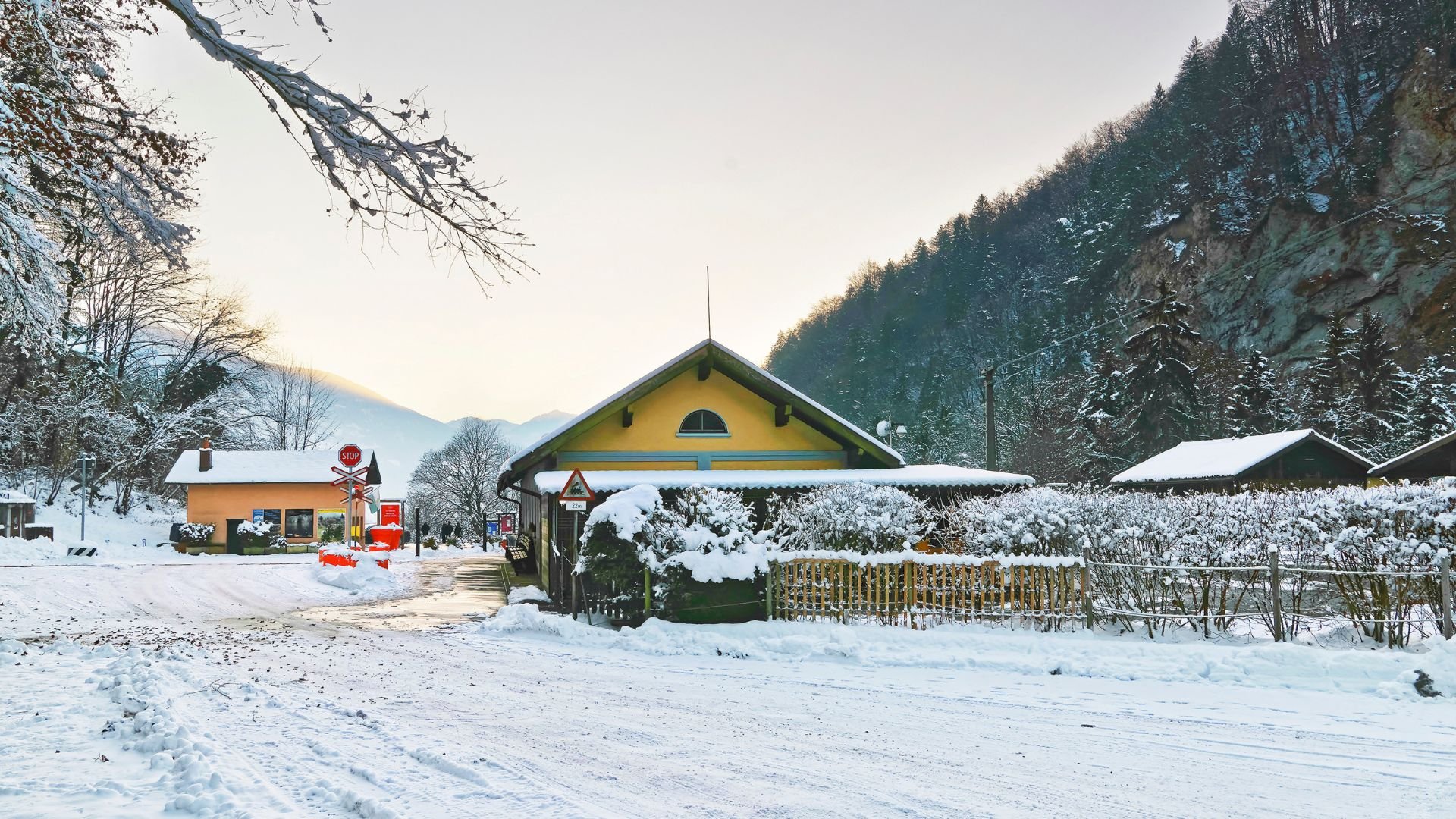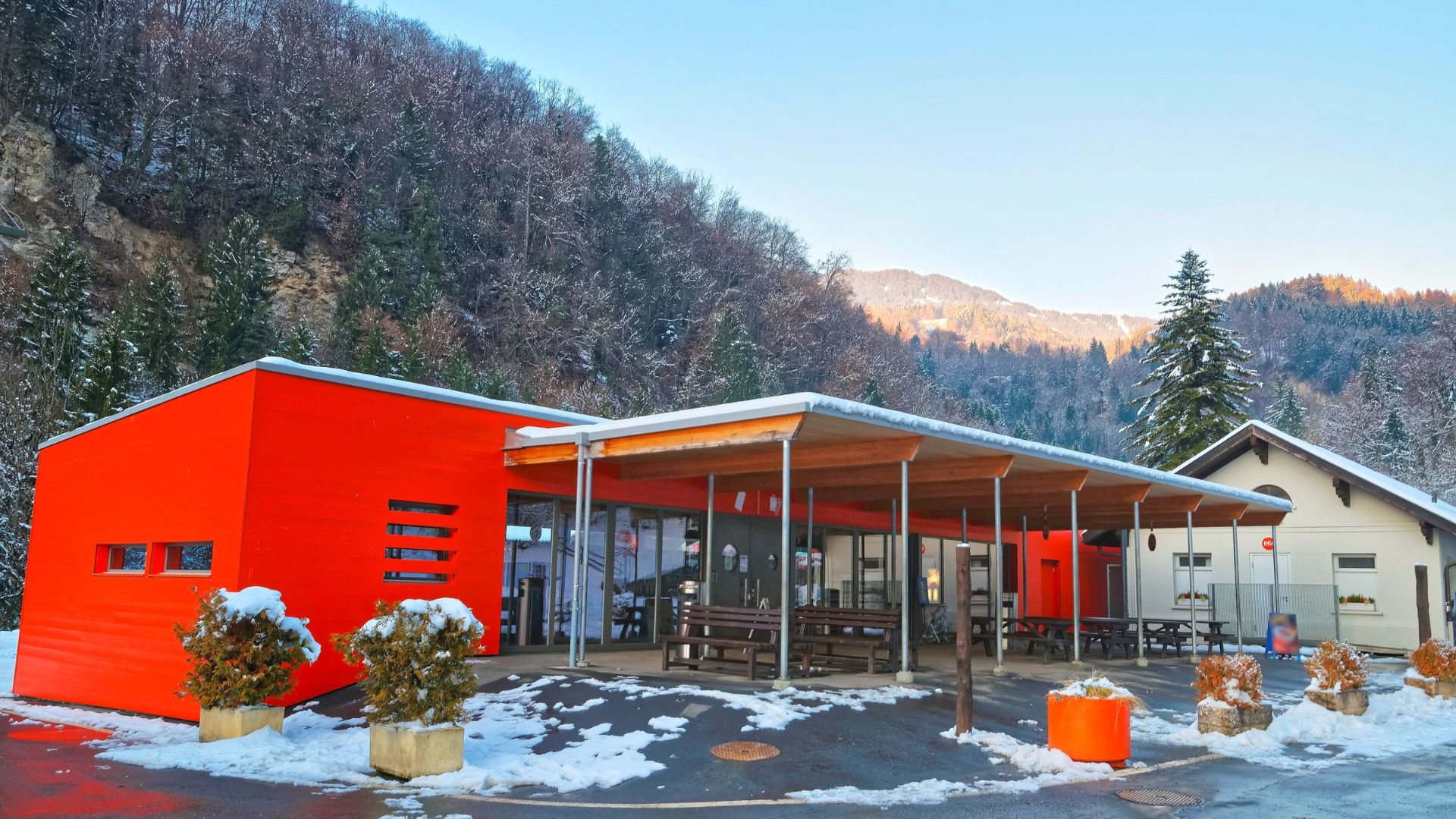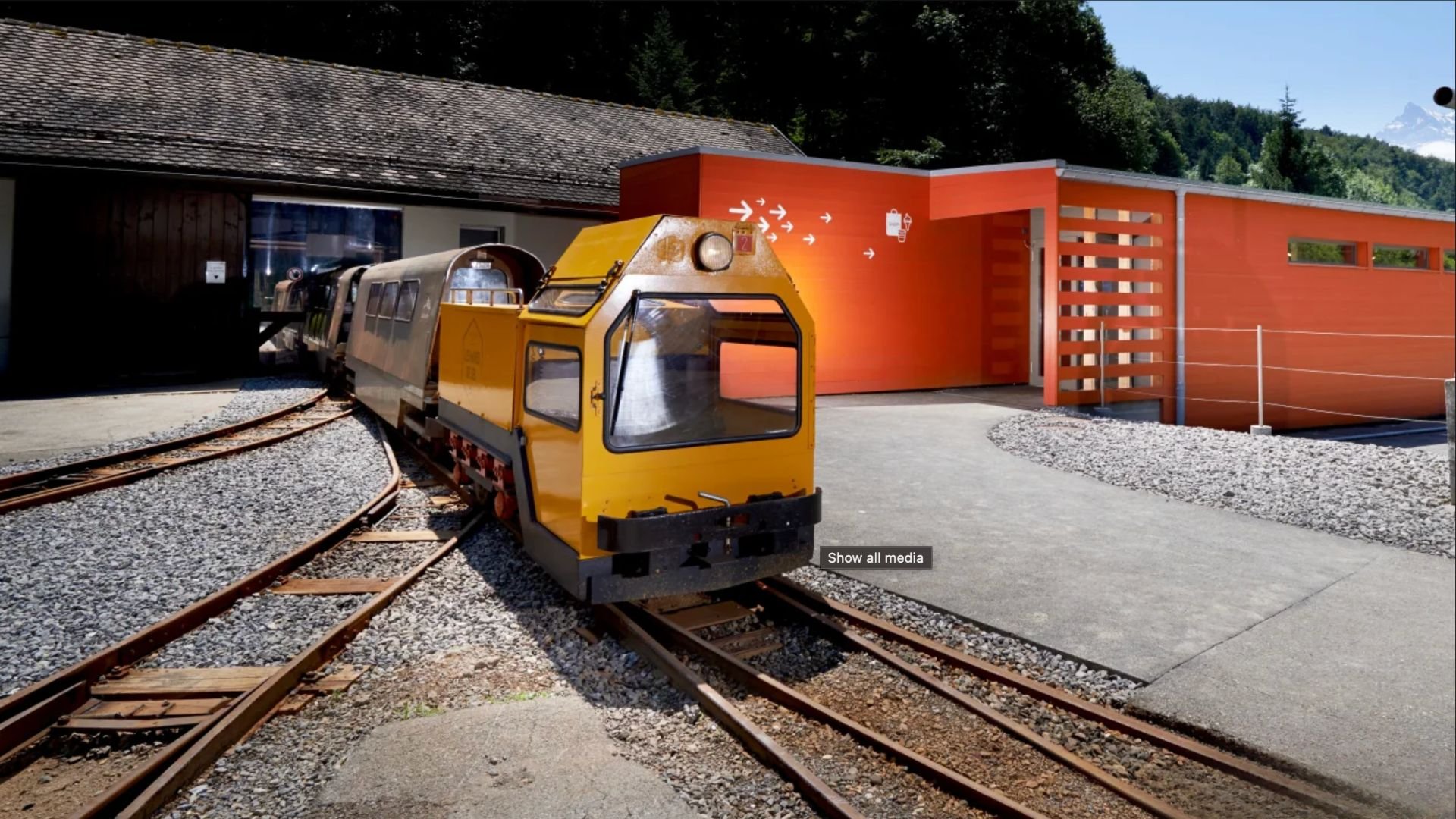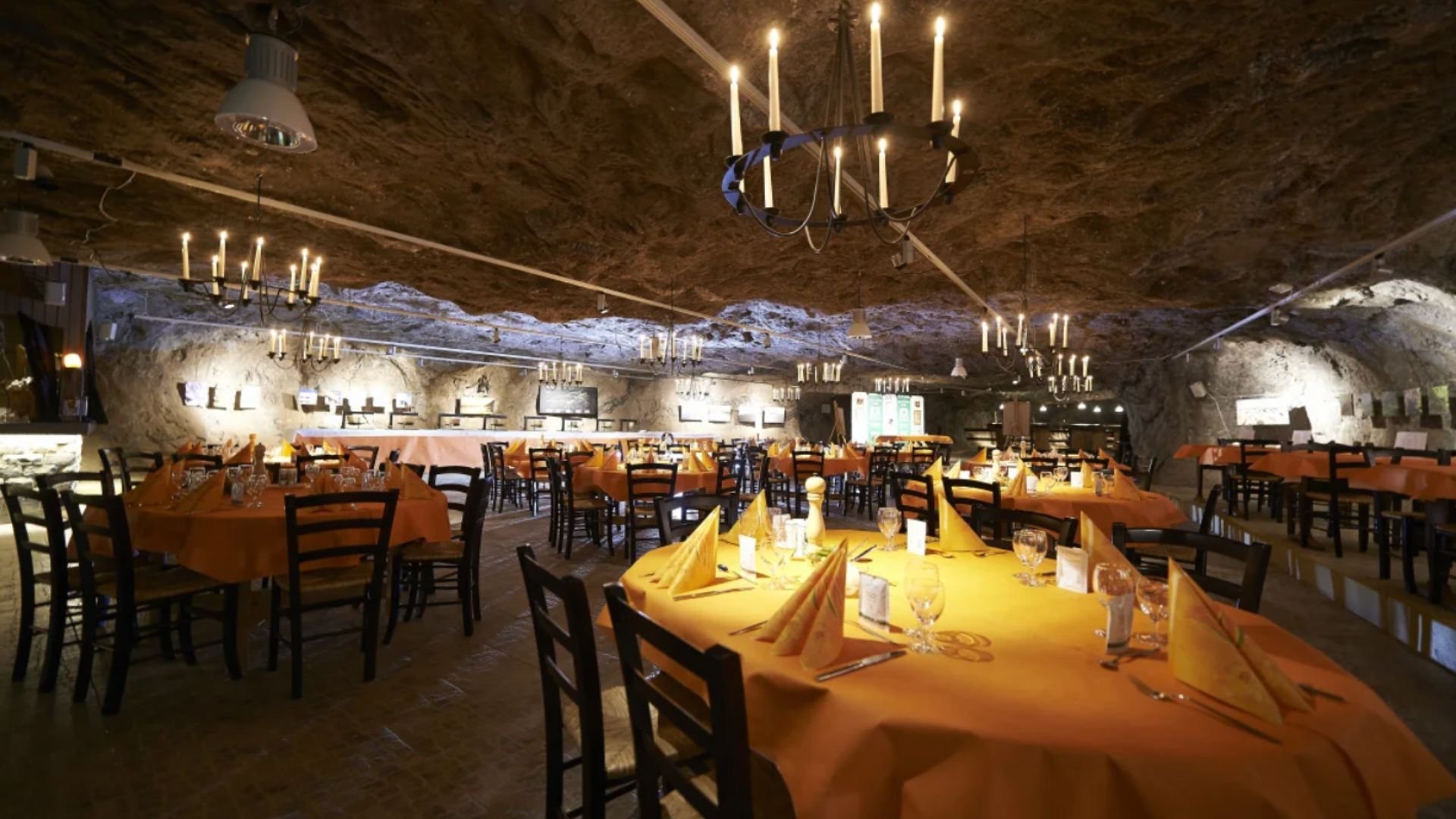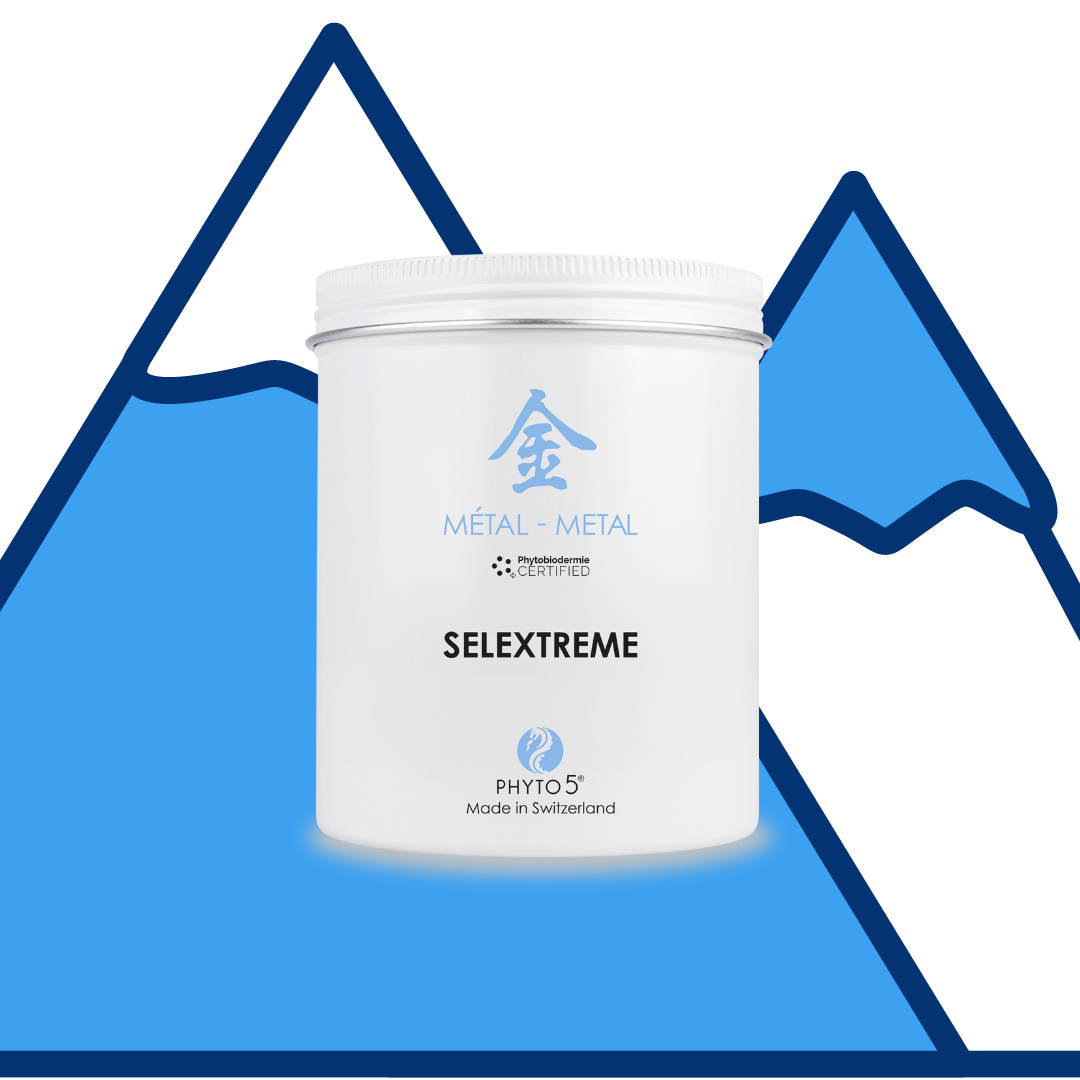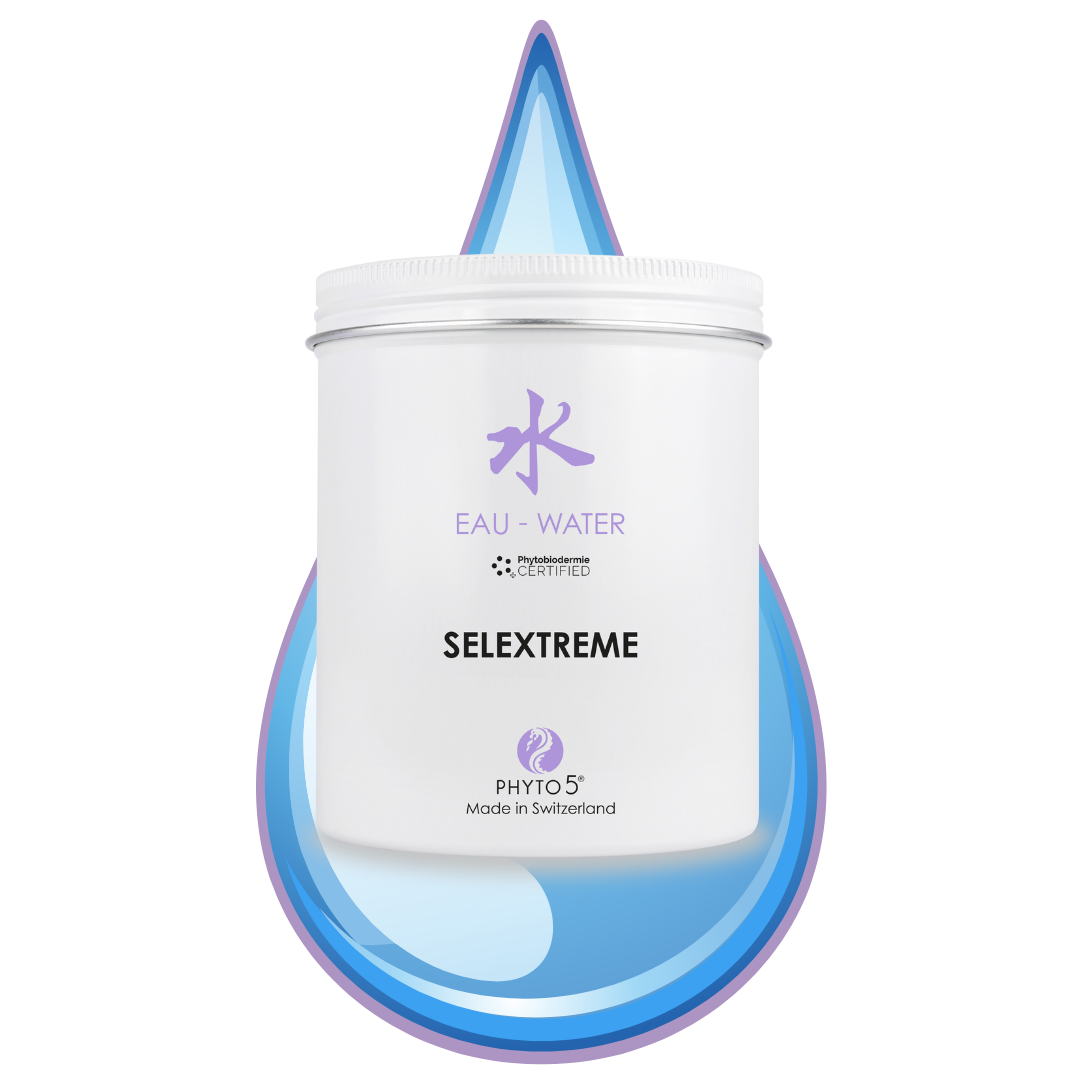Switzerland is famous for its Alps, beauty, exacting purity and manufacturing standards and wealth. These factors play a big role in Switzerland’s lesser known salt Bex (pronounced bay) salt mines. The Bex salt mines have actually played a major role in the development of Switzerland. They provide valuable premium salt for chemical and pharmaceutical companies all over the world. And Bex salt (Le Sel des Alpes) hugely contributes to Switzerland’s own wellness tourism industry. Swiss-based PHYTO5 chooses Bex salt the main wellness ingredient for its five element Selextreme exfoliation products. PHYTO5 takes Le Sel des Alpes and perfectly saturates it with high grade essential oils. This process creates five exquisite exfoliation products, each with a specific mission:
Wood Selextreme for vital energy support and skin lightening.
Fire Selextreme for calming and soothing sensitive, irritated skin.
Earth Selextreme for detoxification and encouraging circulation of lymph.
Metal Selextreme for mineralization and blood circulation support.
Water Selextreme for improved hydration and balance of water retention.
Partake of the mystique of quantum energetic formulated plant-based skincare for your exalted natural beauty and well-being. Subscribe for a discount promo code, plus get truly unique beauty tips and offers.
“The history of Swiss Saltworks goes back over 450 years. Salt embodies typical Swiss characteristics such as innovation, tradition, reliability and quality.”—houseofswitzerland.org
Salts from the mines of Bex are considered Switzerland’s impeccable white gold.
How Did the Alpine Salt Form?
When the planet was born many billions of years ago, salty oceans covered the planet. Between 200 to 60 million years ago, the present Rhône Valley was a shallow sea. As continents began to form, the sea withdrew from the land. Salt layers up to 330 feet thick formed in northwestern Switzerland, the Jura and Central Plateau.(1)
In the area that is now Switzerland, rock which eventually formed the Alps trapped the salt within. There the salt remained pure and protected from all pollution for at least 200 million years. The salt deposits of Bex come from the sea where the Rhone Valley exists today.
The Tiny Town of Bex Is Now Famous Because of Its Salt.
In the Alpine valley of La Gryonne, a train runs through. It connects the tiny village of Bex to the slightly larger Aigle, five and half miles south.
The entire region would be historically unremarkable without the discovery of Switzerland’s only working salt mine.
“A steep road, but practicable for chars-à-banc,(2) leads through most beautiful scenery to the entrance of the mines. The salt is obtained either from the brine-springs, six or seven of which, of various degrees of strength, burst forth in different parts of the interior of the mountain, or from the rock salt…” —John Murray in the 1838 book, A Handbook for Travelers in Switzerland and the Alps of Savoy and Piedmont
The Swiss had to rely on expensive imports of salt all through the Middle Ages. They bought salt mainly from Franche-Comté, a cultural and historic region of eastern France.
This Is the Legendary Story of the Discovery of Bex Salt In Switzerland
But then came the discovery of their own salt supply.
The legendary discovery happened in the fifteenth century when the shepherd Jean du Bouillet pastured his goats one day. He took his goats to Panex and also to the Fondement just North of Bex. Du Bouillet noticed his goats preferred water from these two springs at these sites.
He tasted the water and found it salty. The farmer filled a cauldron full of this water, boiled it and let it evaporate. Du Bouillet noticed a pinch of salt at the bottom of the pot after evaporation. And so the discovery of salt at Bex was nearly complete. Nearly.
In the mid-sixteenth century, the original merchant family Zobel from Augsburg purchased the land. They mined salt only from the brine-springs(2) in Bex.
Aware of health benefits of the brine, the region opened wellness brine baths. These baths attracted people from all over the world.
But around the year 1823 the brine-springs began to fail. The German-Swiss geologist Jean de Charpentier got involved. He suggested driving shafts and galleries into the mountain to search for rock salt. By doing so they discovered a very large and rich vein of salt within the mountain.
For centuries ownership of these salt mines meant wealth and power. Today, ‘les Mines de Sel de Bex’ belong to the canton(4) of Vaud.(5)
How Is Le Sel des Alpes Extracted?
A 30+ mile labyrinth of passages and tunnels yields 30,000 tons of salt per year.
Mine operators at Bex extract rock salt by means of evaporation or leaching. They use the latest technology and green energy to preserve the environment’s delicate balance.
They drill holes 160 to 1300 feet deep and pump in crystal clear Swiss mountain water. Next, they pump the salt solution (brine) created back to the surface to heat it. As the water evaporates, a pure fine salt crystallizes.
The mountain also holds a number of reservoirs of briney water. Miners harvest salt from these reservoirs, too, through a process called graduation.
The salt mines of Bex give us many beautiful minerals. These minerals include very clear crystals of selenite(6), muriacite(7), and anhydrite.(8)
42 valid minerals have been detected in the salt residues of the Bex salt mines.
Le Sel des Alpes is very elevating to well-being. It naturally offers perfect amounts of iodine and fluorine to the human body.
Bex Salt Mines Offers Unique Tours.
The Bex salt mine Le Bouillet(9) offers a museum and a two hour long tour. An audiovisual display shows visitors the evolution of salt mining techniques from 1684 to today.
A long underground narrow-gauge train takes visitors into the low-lit subterranean world for firsthand observation. The train also transports visitors to the inner mountain restaurant located 1300 feet below the surface.
Le Bouillet contains a gallery driven horizontally into the bowels of the mountain. The gallery travels a distance of 6636 feet, seven and a half feet high and five feet wide.
Tours offer subterranean on-foot treks into the mines and tunnels that still exist to this day.
Over the centuries, the Salt Mines of Bex have been visited by many illustrious guests.
Jean-Jacques Rousseau visited in 1754 and Alexandre Dumas visited the mines in September of 1832. Dumas wrote an epic and now famous report on his experience. Napoleon’s second wife, the Empress Marie-Louise, also toured the mines. Le Grand Reservoir was named after her.
#####
Endnotes:
The Swiss Plateau or Central Plateau is one of the three major landscapes in Switzerland, lying between the Jura Mountains and the Swiss Alps.
Chars à banc: horse drawn carriage or early motor vehicle
Brine meaning salty water
Canton: A state of the Swiss Confederation; a subdivision of a country established for political or administrative purposes.
Vaud is a mountainous district in western Switzerland bordered by Lake Geneva to the south and France to the west. Lausanne, the capital, is known for its medieval cathedral and Olympic Museum in Ouchy port.
Selenite: Also known as moonstone, selenite is a form of gypsum occurring as transparent crystals, sometimes in thin plates.
Muriacite: Also known as halite, muriacite is a term applied to the crystalline varieties of anhydrous sulphate of lime; sodium chloride as a mineral, typically occurring as colorless cubic crystals; rock salt.
Anhydrite is a white mineral consisting of anhydrous calcium sulfate. It typically occurs in evaporite deposits.
Named for the shepherd who discovered the salt; story above.
#####
Sources:
Murray, John. A Handbook for Travelers in Switzerland and the Alps of Savoy and Piedmont, Including the Protestant Valleys of the Waldenses. Germany, John Murray & Son, 1838.
Teller, Matthew. The Rough Guide to Switzerland. United Kingdom, Rough Guides Limited.
Tourismus, Schweiz. “Mines de Sel de Bex.” Switzerland Tourism, www.myswitzerland.com/en-us/experiences/salt-mines/. Accessed 6 Aug. 2023.
“Notre Histoire.” Notre Histoire | Schweizer Salinen, www.salz.ch/fr/notre-histoire.
“Salt – the Raw Material from the Swiss Alps.” House of Switzerland, 22 Apr. 2020, houseofswitzerland.org/swissstories/history/salt-raw-material-swiss-alps.


